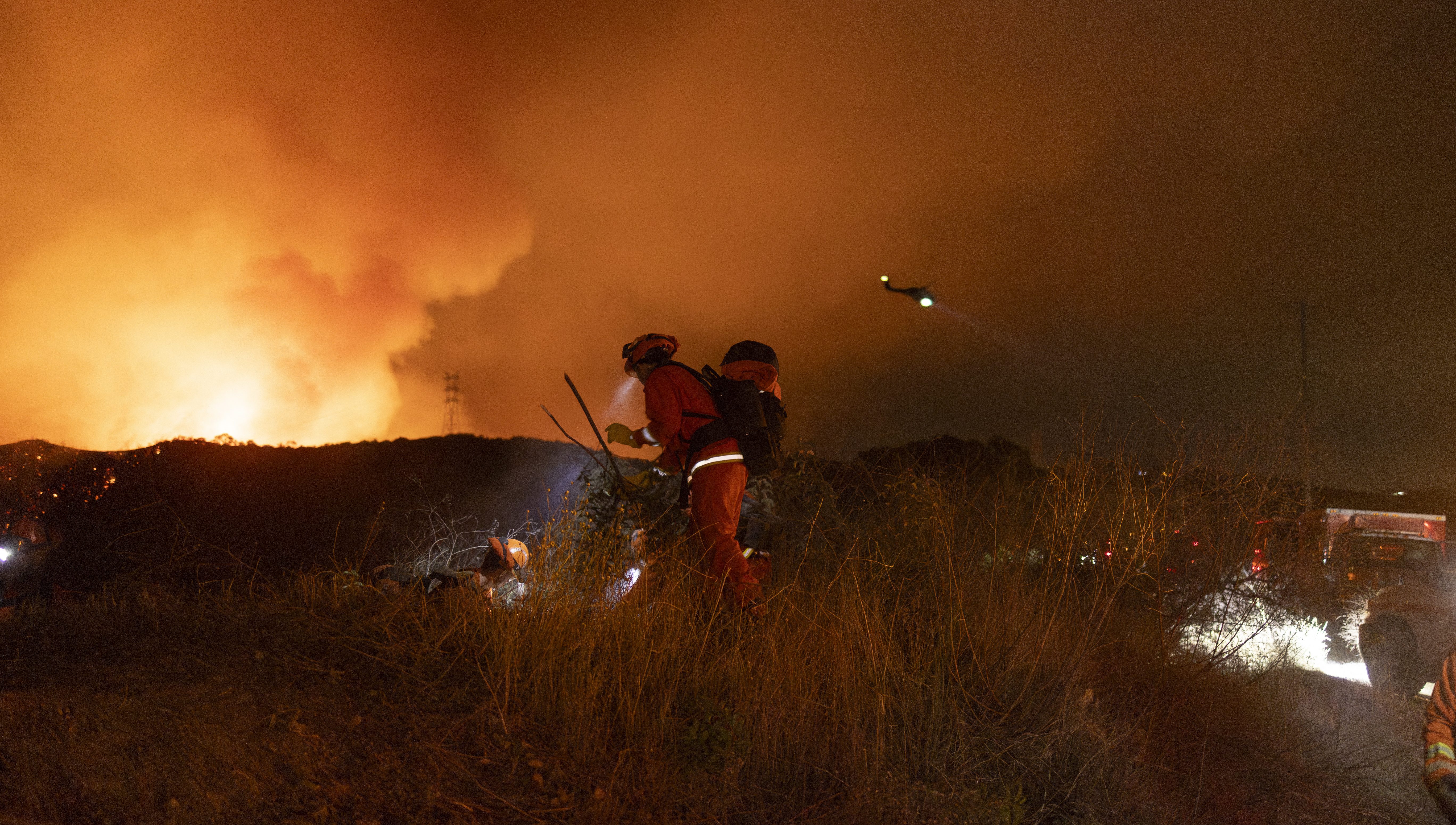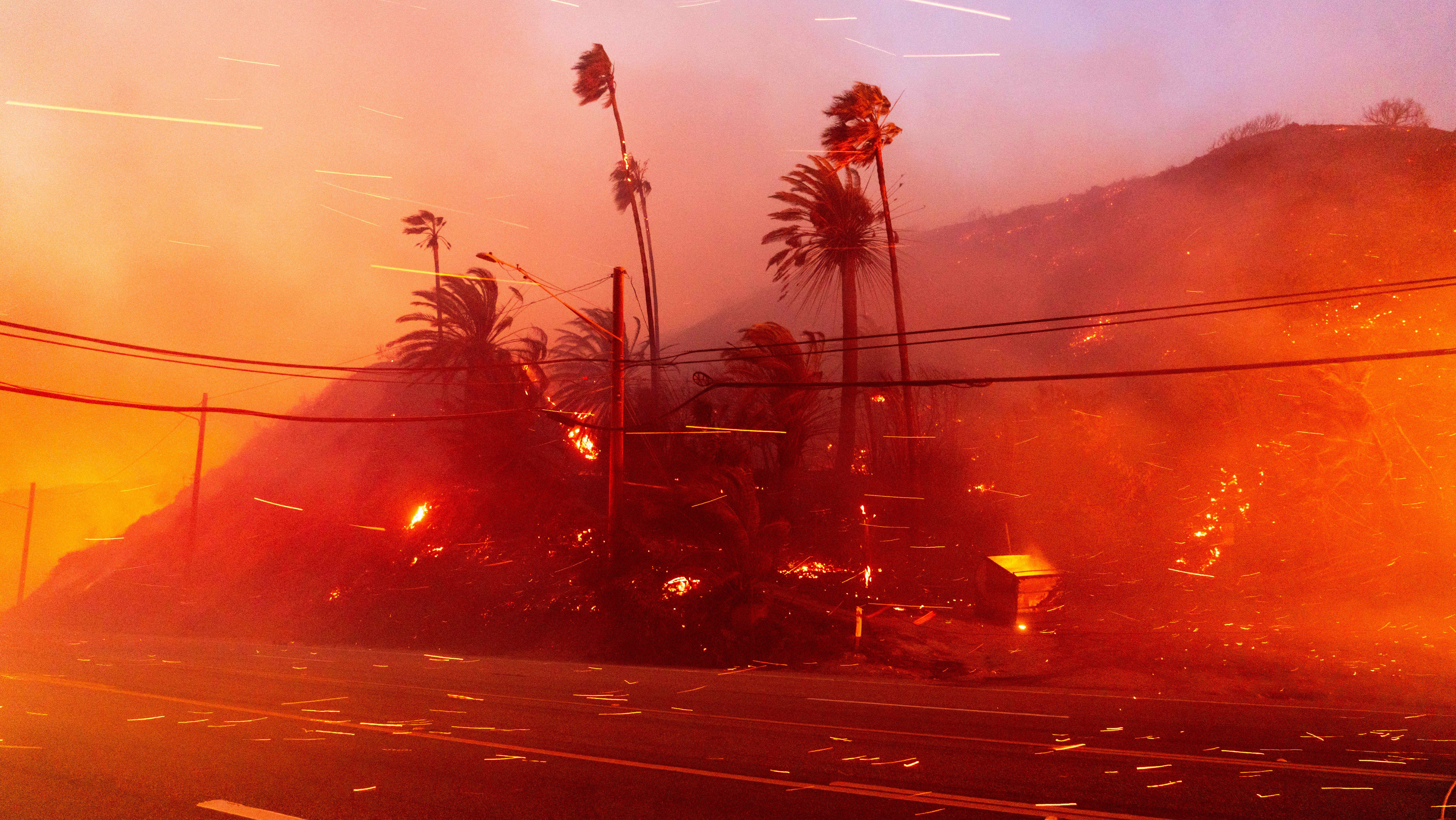Wildfire Smoke Deaths: Climate Fuels 15,000+ US Fatalities
Climate-Fueled Wildfire Smoke: Thousands of US Deaths
Introduction: A Breath of Unhealthy Air
Imagine a summer day. The sky, usually a brilliant blue, is now a hazy, ominous orange. The air hangs heavy, making each breath a labored effort. This isn't just a bad dream; it's becoming a reality for many Americans, thanks to the escalating threat of climate-fueled wildfires. A new study reveals the chilling impact of wildfire smoke, linking it to thousands of deaths and billions of dollars in economic costs. This isn't just an environmental issue; it's a public health crisis knocking at our door.
The Grim Reality: Death and Dollars
The study, published in Nature Communications Earth & Environment, paints a stark picture. Between 2006 and 2020, climate change contributed to approximately 15,000 deaths in the US due to exposure to fine particulate matter (PM2.5) from wildfire smoke. The financial toll? A staggering $160 billion. Think of that money – schools, hospitals, infrastructure – gone up in smoke, quite literally.
Understanding PM2.5: Tiny Particles, Big Problems
What is PM2.5?
PM2.5 refers to particulate matter with a diameter of 2.5 micrometers or less. To put that into perspective, it's about 30 times smaller than the width of a human hair! These tiny particles can penetrate deep into our lungs and even enter our bloodstream, causing a cascade of health problems.
Why is PM2.5 from Wildfire Smoke So Dangerous?
Wildfire smoke PM2.5 is particularly nasty because it contains a cocktail of toxic chemicals released from burning vegetation, buildings, and other materials. Inhaling this concoction can trigger asthma attacks, worsen heart conditions, and even increase the risk of premature death. It's like smoking a cigarette without even lighting one up.
Regional Hotspots: Oregon and California Bearing the Brunt
The study highlights that states like Oregon and California are particularly vulnerable. These states have experienced some of the most devastating wildfires in recent years, blanketing communities in thick smoke for weeks on end. The annual death toll ranged from 130 to a heartbreaking 5,100, with these states frequently at the higher end of that spectrum. It’s a constant cycle of fire season, smoke, and compromised health.
The Human Cost: Beyond the Numbers
Beyond the Statistics
While the numbers are alarming, it's crucial to remember that each death represents a life cut short, a family devastated, and a community grieving. These aren't just abstract figures; they're real people whose lives were impacted by a crisis largely driven by our own actions.
The Vulnerable Population
Children, the elderly, and individuals with pre-existing respiratory or cardiovascular conditions are particularly vulnerable to the effects of wildfire smoke. For these populations, even short-term exposure can have serious and long-lasting consequences. It creates a system of inequality, where those already struggling with their health are disproportionately affected.
Climate Change: Fueling the Flames
The Connection
The study emphasizes the critical link between climate change and the increased frequency and intensity of wildfires. Rising temperatures, prolonged droughts, and changes in precipitation patterns create the perfect conditions for wildfires to ignite and spread rapidly. It’s like pouring gasoline on a campfire – the flames explode.
What Can We Do?
Addressing climate change is paramount to mitigating the risk of future wildfires and protecting public health. This requires a multi-faceted approach, including reducing greenhouse gas emissions, investing in sustainable energy sources, and implementing responsible land management practices. The time for debate is over; the time for action is now.
Harvard Medical School's Perspective: A Call to Action
Dr. Nicholas Nassikas, a study author and physician and professor of medicine at Harvard Medical School, highlights the growing concern over wildfire smoke events. His team wanted to understand the real-world consequences of these events on mortality, the most severe health outcome imaginable. It is no longer enough to just treat the sick; we must also prevent the sickness.
Economic Impact: Billions Up in Smoke
Healthcare Costs Soar
The $160 billion economic cost associated with wildfire smoke includes not only direct costs, such as firefighting expenses and property damage, but also indirect costs, such as healthcare expenditures and lost productivity. Increased hospital visits for respiratory and cardiovascular ailments contribute significantly to this financial burden. It is a steep price to pay for inaction.
Beyond Healthcare: Impacts on Other Industries
The economic impact extends far beyond the healthcare sector. Wildfire smoke can disrupt transportation, tourism, and agriculture, further compounding the financial losses. Businesses may be forced to close temporarily, and outdoor activities may be curtailed, impacting local economies. The ripple effects are far-reaching and devastating.
Mitigating the Risks: What Can Be Done?
Personal Protective Measures
During wildfire smoke events, it's crucial to take steps to protect yourself and your family. This includes:
- Staying indoors as much as possible.
- Using high-efficiency particulate air (HEPA) filters in air purifiers.
- Wearing N95 respirators when outdoors (ensure proper fit).
- Limiting strenuous activities.
- Monitoring air quality reports.
Community-Level Actions
Communities can also implement strategies to mitigate the risks of wildfire smoke, such as:
- Establishing clean air shelters for vulnerable populations.
- Improving public awareness campaigns about wildfire smoke hazards.
- Investing in early wildfire detection and suppression systems.
- Implementing land management practices to reduce wildfire risk.
The Future Outlook: A Challenging Path Ahead
Unfortunately, the outlook for the future is concerning. As climate change continues to worsen, we can expect to see more frequent and intense wildfires, leading to even greater exposure to wildfire smoke. Without decisive action, the health and economic consequences will only continue to escalate. The writing is on the wall – we must act now to change course.
The Role of Policy: Implementing Change
Government Action
Effective policies are essential to address the root causes of climate change and mitigate the risks of wildfire smoke. This includes investing in renewable energy, implementing stricter emissions standards, and promoting sustainable land management practices. Government leadership is crucial in driving meaningful change.
Individual Responsibility
While government action is important, individuals also have a role to play. By making conscious choices to reduce our carbon footprint, such as driving less, conserving energy, and supporting sustainable businesses, we can collectively make a difference. Every small action counts.
Looking Ahead: Building a Resilient Future
Building a resilient future in the face of climate change and wildfire smoke requires a collaborative effort from governments, communities, and individuals. By working together, we can reduce greenhouse gas emissions, protect public health, and create a more sustainable and equitable future for all. The challenge is daunting, but the stakes are too high to ignore.
Conclusion: A Call to Action for Healthier Air
The study's findings are a stark reminder of the devastating consequences of climate change and the urgent need for action. Wildfire smoke poses a significant threat to public health and the economy, and these impacts are only likely to worsen in the years to come. By addressing the root causes of climate change and implementing effective mitigation strategies, we can protect our communities and build a healthier future for generations to come. Let's make the air we breathe a priority.
Frequently Asked Questions (FAQs)
Q1: How can I tell if the air quality is unhealthy due to wildfire smoke?
A: You can monitor air quality using resources like AirNow.gov or local news outlets. Pay attention to the Air Quality Index (AQI), particularly the PM2.5 levels. Unhealthy levels are typically above 100.
Q2: What kind of mask is most effective at protecting against wildfire smoke?
A: An N95 respirator mask, when properly fitted, is the most effective at filtering out PM2.5 particles. Surgical masks and cloth masks offer limited protection.
Q3: Are there long-term health effects associated with wildfire smoke exposure?
A: Yes, long-term exposure can increase the risk of chronic respiratory illnesses, cardiovascular disease, and even cancer. More research is ongoing, but the potential for lasting damage is a significant concern.
Q4: Besides staying indoors, what else can I do to protect my home from wildfire smoke?
A: Seal windows and doors with weather stripping, use air purifiers with HEPA filters, and avoid activities that generate indoor air pollution, such as burning candles or using gas stoves without ventilation.
Q5: What can I do to help reduce wildfire risk in my community?
A: Support responsible forest management practices, create defensible space around your home by clearing vegetation, and be mindful of activities that could spark a wildfire, such as campfires or fireworks. Report any suspicious activity to the authorities.

